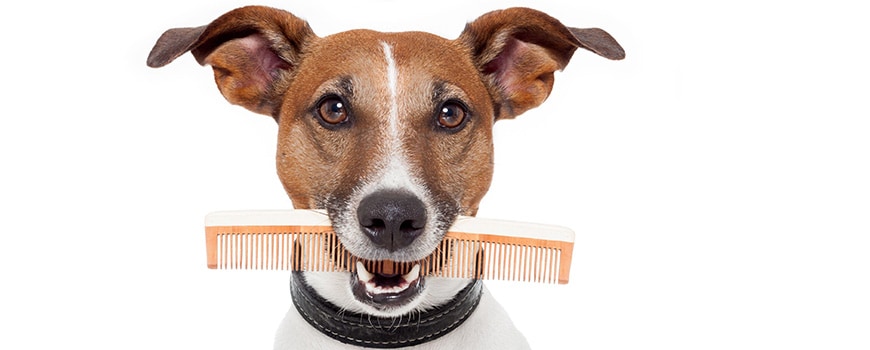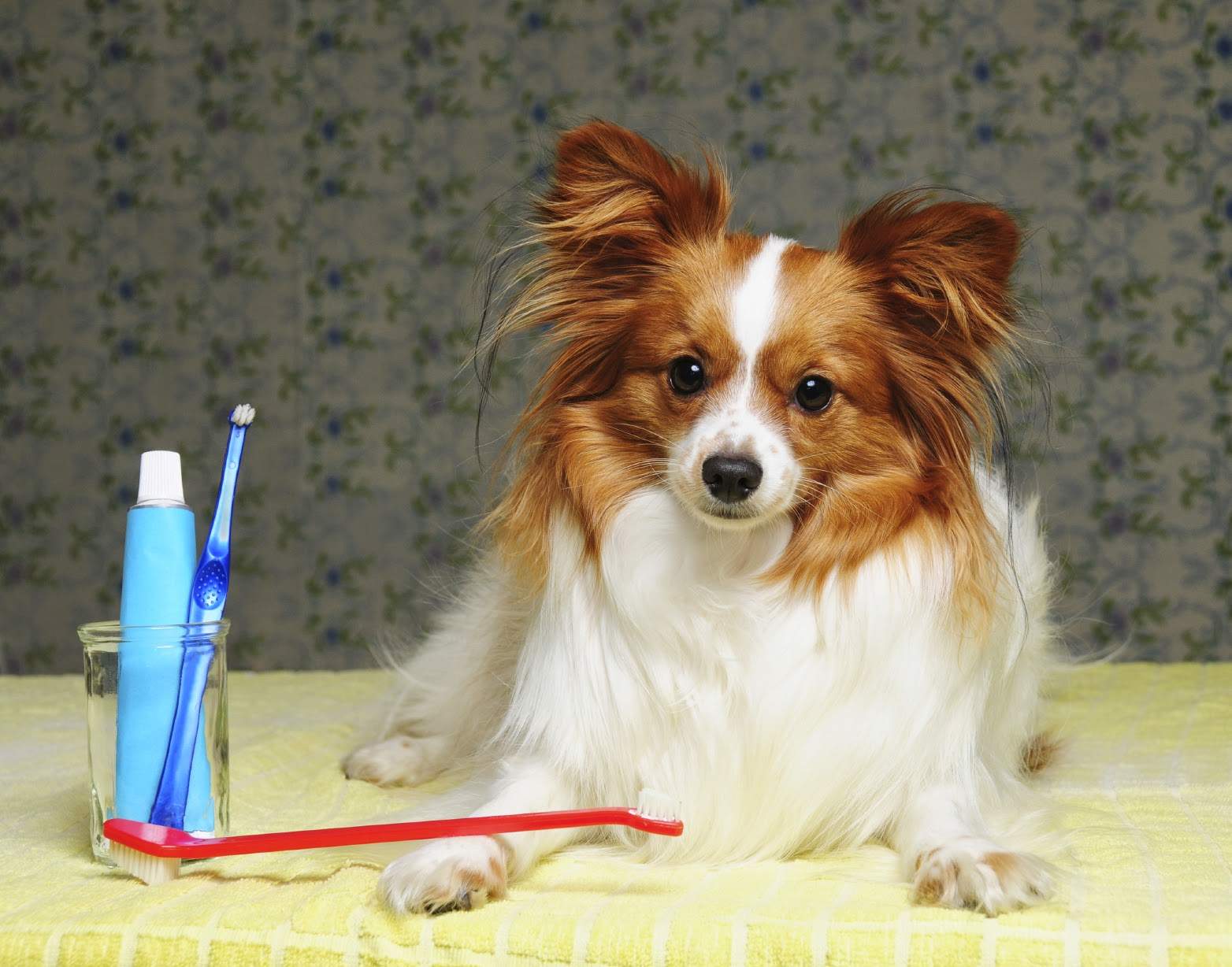Keeping your Papillon’s teeth clean and healthy will make life more pleasant for both you and your pet. Even small amounts of plaque and tartar can leave an otherwise delightful little dog with breath that could knock over a Great Dane. Additionally, good dental hygiene helps maintain good overall health.
When your dog swallows bacteria, it is transported throughout his body. These harmful microorganisms can leave your Papillon vulnerable to countless medical conditions, including heart and kidney disease. Neglecting dental care will also inevitably lead to tooth decay, and likely tooth loss, as your pet ages.
Good canine dental care begins with what you choose to feed your dog. Because kibble is dry, it won’t calcify on your dog’s teeth as quickly as canned or home cooked foods. If you do feed your Papillon soft or wet foods, be sure to give him plenty of crunchy treats such as raw carrots and other vegetables. Many dental-friendly treats available at most pet supply stores, such as the ones made by Nylabone, are made specifically to reduce plaque and tartar buildup. Regular brushing will be necessary, though, no matter what your dog eats.
The Brushing Process
Because the Papillon’s mouth is so tiny, you may opt to use a simple piece of sterile gauze in lieu of a toothbrush. Another great alternative is a finger brush, a soft plastic brush that fits over the tip of your finger and easily into the mouths of even toy dogs. Even larger dogs often balk at the prospect of allowing a standard-sized canine toothbrush into their mouths.
Whether your dog tolerates his toothbrush well or not, one thing he will almost certainly like is the toothpaste itself. Unlike human toothpaste, canine toothpaste comes in a wide variety of dog-friendly flavors, such as beef, poultry, and seafood. The enticing tastes and smells may even be enough to make your dog enjoy having his pearly whites cleaned. Baking-soda and tartar-control formulas are also available. Never use your own toothpaste on your pet, though, because it can make him sick.
Begin by offering your dog a small amount of his toothpaste on your bare finger. As soon as he realizes that it tastes as good as it smells, he will be more open to the brushing process. Using a circular motion, begin brushing just one tooth at a time, concentrating on the area where the tooth meets the gum line. This is the spot where tartar tends to accumulate.
If your dog is particularly resistant, try spreading the task out over a few days, ending on a positive note whenever possible. As you gradually increase the number of teeth you clean at each sitting, you should be able to perform at least two to three complete brushing sessions a week. Daily brushings are even better! Although rinsing isn’t necessary, it’s recommended to follow up brushing your dogs’ teeth by giving them a cool drink of water and taking them for their morning walk. This helps integrate the task into your daily routine.
When a dog owner doesn’t make dental care a priority, professional cleanings and tooth extractions usually become necessary. This process requires general anesthesia, which is best avoided whenever possible for all pets, but especially for the Papillon, who is extremely vulnerable to the dangers of anesthetics. Regular tooth brushing is highly preferable to this risky option.
Most importantly, if you aren’t able to brush your dog’s teeth every day, don’t give up. This is not an all-or-nothing task. Brushing just twice a month is better than not at all.
Puppy Breath
One of the least talked about but most commonly treasured parts of owning a dog is “puppy breath.” Many dog lovers compare this unique smell to that of a new car. It is instantly identifiable, albeit somewhat of an acquired taste, and sadly it only lasts a short time. This perfectly normal and healthy scent is in part the result of a dog’s early diet—mother’s milk, puppy food, and the enzymes that break down these nutrients.
It is also frequently due to gas escaping from a puppy’s stomach through his immature esophagus. Older puppies may even experience a second surge of stinky breath when they begin losing their baby teeth. This typically only lasts as long as it takes the adult teeth to grow into place, though.
True bad breath, on the other hand, is a matter for concern. Caused by tartar and gum disease, worms, or coprophagia (eating feces), this problem isn’t only unpleasant for those who share a dog’s air space, but it is also a serious issue that should never be overlooked. Left ignored, it can lead to o number of dangerous health issue, including kidney and liver failure.
The best way to avoid these repercussions is by brushing your Papillon’s teeth as often as possible. You should also bring stool samples whenever you take your dog for a routine exam so that your vet can check for the presence of worms. If you suspect your dog is eating his own feces, try adding a small amount of meat tenderizer or acidophilus to his dog food.
Occasionally, a dog can suffer from a temporary case of bad breath due to a specific food item he has ingested. Ta help keep your Papillon’s breath smelling sweet, add some liquid chlorophyll to his water dish or garnish his dinner bowl with a bit of chopped mint or parsley—and follow up by brushing his teeth. Because charcoal absorbs toxins and works as a natural purifier, biscuits containing this ingredient may also help alleviate a mild case of canine halitosis. (Incidentally, charcoal biscuits are great for upset tummies, too).
If bad breath persist, it’s time to take your Papillon to the veterinarian.


